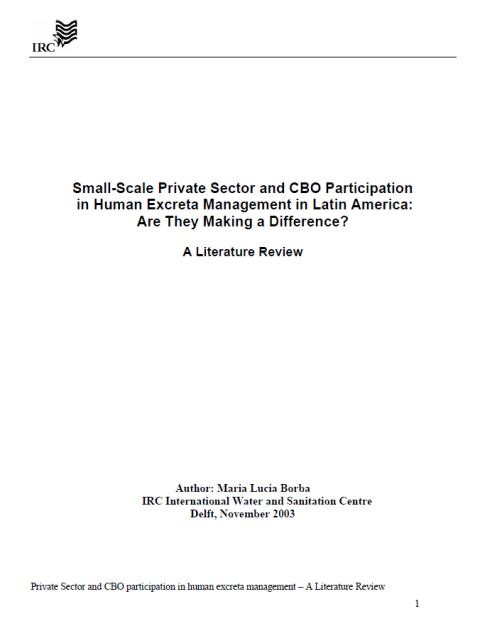The prediction made in the year 1994 that if the construction of sanitation facilities continues to progress as in the recent years, in 40 years the non-served population would reach a staggering 2 billion (WSSCC, 1994) is long overtaken by the facts. Already in 2001, approximately 2.4 billion people or 40% of the world’s population lacked the means for adequate excreta disposal (Appleton, B and Chatterjee, A., 2001). While in the last decade the supply of water has seen an increase in coverage, the adequate disposal of human waste is lagging behind, undermining the benefits which could be fully extracted from the availability of drinking water. In the actual scenario, every cubic meter of supplied water, generates at least one cubic meter of sewage (Água e Cidade, circa 2001). This, combined with the inappropriate disposal of sewage and unsafe hygiene practices, contributes to increasing levels of diarrhoeal disease, among other ailments, with dramatic consequences for the livelihoods of rural and urban communities. Not only health is affected. Lack of adequate sanitation contributes to the irreversible contamination of often scarce natural water resources.
Realizing this situation, many water supply and sanitation sector—governmental and non-governmental—agencies, at national and local levels, in Africa, Asia and Latin America are committing themselves to the pursuit of innovative approaches in order to face the challenge of implementing universal basic sanitation. One innovative approach emphasizes household-centred environmental sanitation, summarized in the Bellagio Principles for sanitation (SANDEC-WSSCC, 2000). Here, the focus is on the use and re-use of waste products, whenever possible, in the zone of ‘production’, that is the household (IRC, 2003). At the household level it is assumed that small-scale independent providers (SSIPs) of sanitation services and community-based organizations (CBOs) can play an important role in accelerating the coverage of latrines / toilets, management tasks and commercial (re-) use of human waste. This paper examines the literature available on the extent to which the private SSIPs and CBOs participate in the coverage, management and commercial (re)use of human waste in Latin America. More specifically, it examines their effective involvement or in other words it asks the question 'Are they making a difference'?
Bibliographic information
Borba, M. L. (2003).
Small-scale private sector and CBO participation in human excreta management in Latin America: Are they making a difference? IRC International Water and Sanitation Centre
Filter / Tags
English
Downloads
Small-Scale Private Sector and CBO Participation in Human Excreta Management in Latin America: Are They Making a Difference?
Download
Type: application/pdf
Size: 0.27 MB

